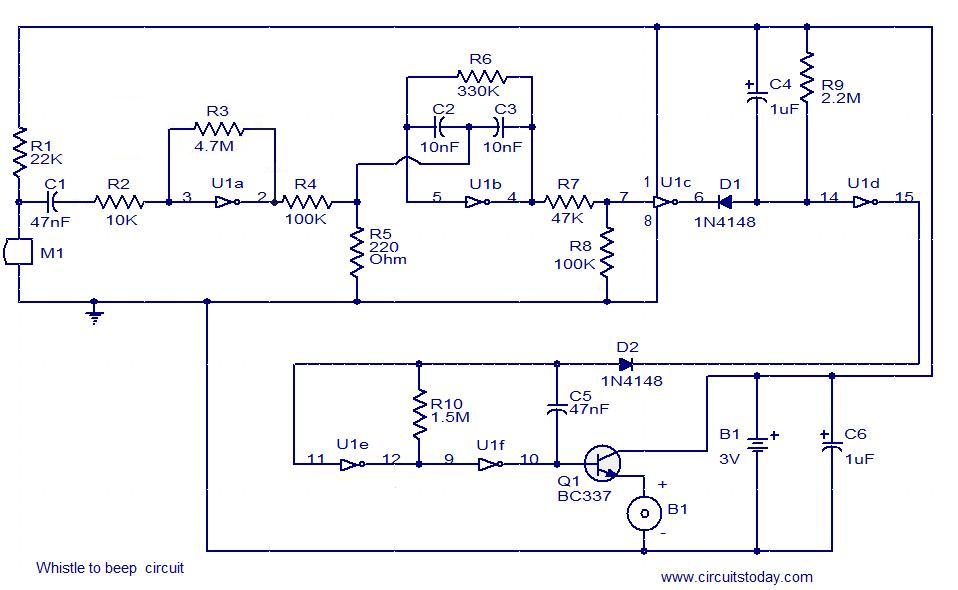Description.
This simple circuit produces a beeping sound that lasts for around 3 seconds whenever you make a whistle. The CMOS Hex inverter CD4049 is the heart of this circuit. Out of the six inverters in CD4049, U1a is wired as an audio amplifier which amplifies the signal picked up by the microphone M1.The U1b is wired as a band pass filter with center frequency around 2KHz.The filter is necessary in order to pass the frequency corresponding to whistling sound and suppress all other frequencies .If the filter is not there, the circuit could easily get false triggered.U1d is wired as a 3S delay monostable multivibrator.The output U1d drives the astable multivibrator formed by U1e and U1f.The astable multivibrator is operating around 4Hz.The combined effect is a intermittent beeping sound that lasts for around 3S.Transistor Q1 is used to drive the buzzer B1.
Circuit diagram with Parts list.
Notes.
- Assemble the circuit on a good quality PCB.
- The circuit can be powered from a 3V battery.
- IC U1 is a CMOS CD4049 Hex inverter.
- M1 can be an electret microphone.
- B1 can be a 3V piezo buzzer.
- Mount the IC on a holder.
- The duration of beeping can be adjusted by varying the components C4 and R9.


8 Comments
Hi, nice idea using just one dig. IC. How does the pass filter work around of U1B, please? I have never saw this kind of solution. Many thanks!
can i get more details on this?
please send us the operation about “whistle responder”.Please tel us about what kind of whistle we should use and of how much frequency.
I;m sorry if I put this in the wrong place. Don’t know where I should post something like this.
Thanks again, ARNIE
I need a circuit for a ribbiting Garden Frog motion detector. It has an LDR, COB,3v, Mounted on a pcb with speaker.
Thanks, ARNIE
sir can you tell me where i can get um66 pcb circuit??
please reply fast i really need your help